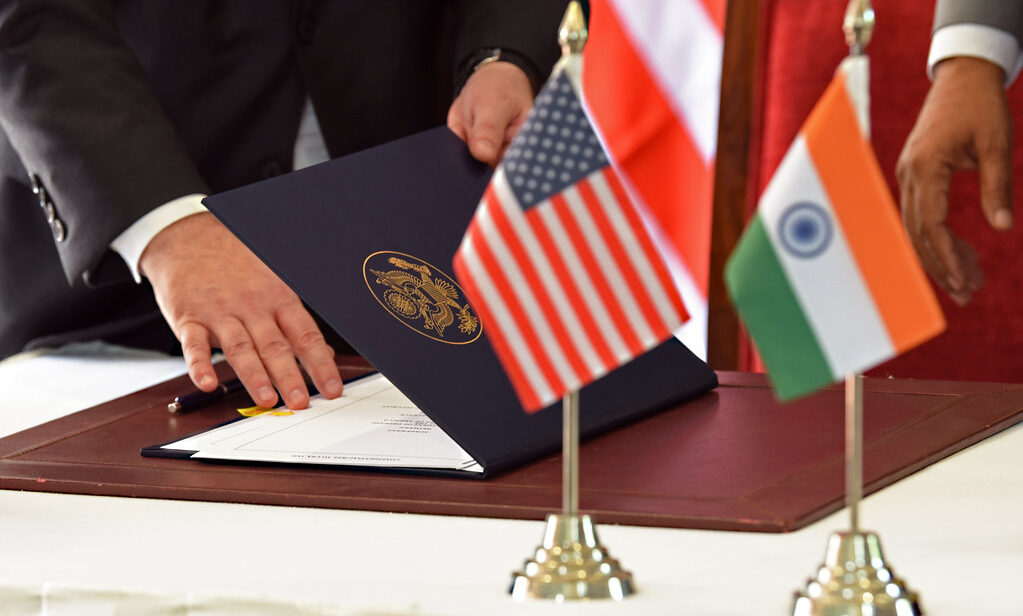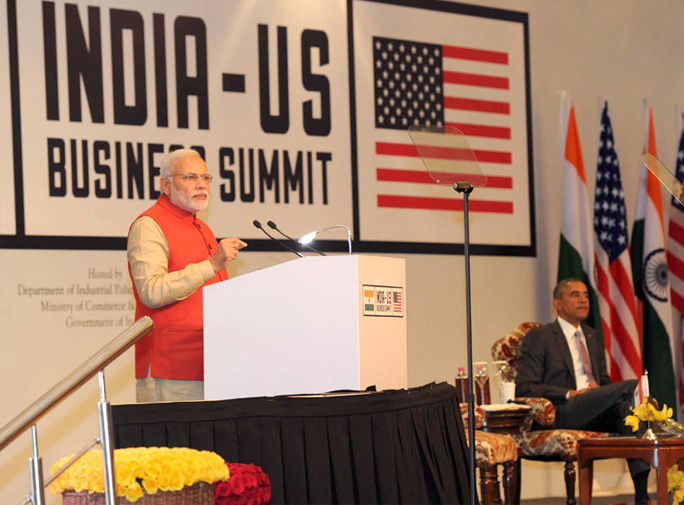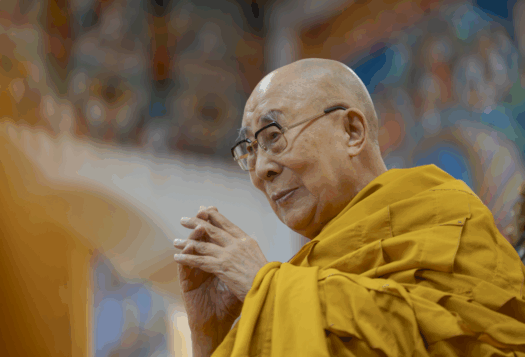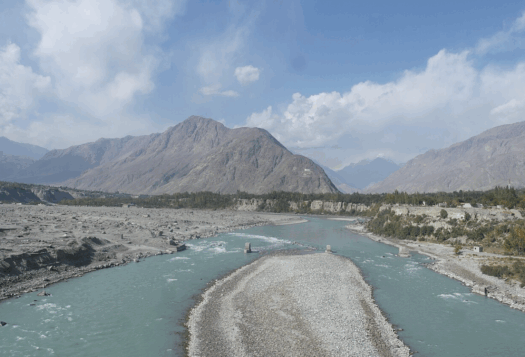
Over the past two decades, U.S.-India relations have progressed on an upward trajectory, signifying a growing strategic congruence – if not convergence. From the vantage point of New Delhi, an analysis of this bilateral relationship is often colored by what Indian policymakers, politicians, and the public think about the United States. Yet, little substantial attention is paid to the narratives surrounding India in the United States and the subsequent underpinnings for them.
For any bilateral relationship to flourish, a clear understanding of prevalent perspectives and narratives are crucial. To elucidate American views of India, this article will identify prevalent narratives in the United States about India, arguing that the U.S. vision of India is shaped by historical episodes as well as the assumption that norms like democracy are necessary and sufficient conditions to solicit India’s cooperation in upholding a U.S-led international order. By highlighting U.S. views of India, the article sheds light on divergent expectations that could help understand some misalignments in the Indo-U.S. strategic partnership.
The Tiger in the Eagle’s Mind: Understanding Debates about India in the United States
From Washington’s perspective, the U.S.-led rules-based international order (RBIO) is increasingly under duress. To bolster the RBIO, the United States has turned towards its network of allies and partners. To quote a 2014 commentary by the late Senator John McCain, the United States needs “willing and capable partners who share its interest and values to serve as a stakeholder in the shared vision of international order.” Therefore, the U.S. pivot towards India needs to be understood as its own desire to have capable partners for maintaining the RBIO which is increasingly being tested with the rise of China. In short, the United States is looking for a responsible partner in India who will shoulder the responsibility for managing and (perhaps defending) the U.S.- led visions of international order.
India on the global stage proudly portrays itself as the ‘world’s largest democracy,’ reinforcing the U.S. narrative that shared values bind the pair together.
There are three main views of India that inform U.S. policy towards New Delhi in Washington. First, policy elites in D.C. perceive that shared democratic values align India’s interest with preserving the U.S.-led RBIO. Very much like Franklin D. Roosevelt’s correspondence to Mahatma Gandhi written to seek support against the then-imperial Japan and Nazi Germany: “Our common interest in democracy and righteousness will enable your countrymen and mine to make common cause against a common enemy.”
While democracy has been perceived as central to the bilateral relationship since Independence in 1947, concerns are being expressed in D.C. about New Delhi’s commitment to democratic values. Therefore, a dominant view in the United States vis-a-vis India is that democratic values are being eroded. Merits of the view notwithstanding, this again highlights the deployment of a value-centric prism to Indo-U.S. relations.
Here, it is worth noting that the synonymous recognition of India and democratic values is a consequence of New Delhi brandishing its democratic credentials. India on the global stage proudly portrays itself as the ‘world’s largest democracy,’ reinforcing the U.S. narrative that shared values bind the pair together. The Indian foreign policy apparatus uses the country’s democratic standing to seek symbolic equality vis-à-vis the United States and other liberal great powers. Therefore, the United States’ emphasis on democracy in its partnership with India is due to both Washington’s perception of the importance of shared values and the signals that India often gives.

A second view of India in the United States is that India is a free rider. This camp argues that the United States has been giving concessions to New Delhi without much in return. This notion emanates from the belief that ‘India wants to be a beneficiary of the international system nourished by the United States and its allies without shouldering the burden as far as global security issues or human rights is concerned.’ This view could also be attributed to the Cold War mentality that has a penchant for neatly defined security arrangements, where developing countries had to either be with the United States or against them. Defense deals like the recently concluded GE F414 too are being viewed through the lens of whether access to such technology would prompt New Delhi to side with the United States in the case of a Sino-U.S. conflict. In fact, commentaries labeling India as ‘America’s Bad Bet’ are premised on similar assumptions that ‘India will never engage in a coalition warfare with the United States against China unless its interests are directly threatened… in a Sino-U.S. conflict over Taiwan, India would stay out of it, notwithstanding the U.S. generosity.’ These assumptions could again be traced to Cold War politics where India pursued independent foreign policy paths which the United States perceived as antithetical to U.S. values and interest.
A third American perspective on India is its potential as a growth engine. The American private sector appears optimistic about India’s growth trajectory. A report by the world’s leading asset management firm, Capital Group, has lauded India’s strides in digitization, infrastructure, and even attempts to kickstart manufacturing, placing India in the league of breakout emerging markets. As companies move manufacturing hubs from China to other Asian countries, the private sector shows vested interest in closer U.S.-India ties.
Poised for Partnership
Here, it is important to reiterate that there exists bipartisan momentum as far as the bilateral relationship between these two democracies is concerned. According to a Pew Research survey, more than half of the American adult population, i.e., around 51 percent tend to have a favorable view of India, and around 44 percent tend to have an unfavorable view. Similarly, at a party level, the survey notes that 56 percent of Democrats view India favorably compared to 48 percent of Republicans. These are important markers because in mature democracies, foreign policy is increasingly being subjected to public debate and mass opinion. As the United States struggles with a polarized domestic political environment, bipartisan support for stronger ties with India could ensure traction is made.
Narratives play an important role in shaping the evolving Indo-U.S. strategic partnership and therefore, it is crucial for New Delhi to pay heed to the signals being sent and the way they are being interpreted by policy elites in Washington.
Next, there is a need to emphasize that this partnership has a rationale of its own beyond containment and balancing. The bilateral trade between these countries stands at around USD $129 billion, and the Indian Prime Minister’s recent visit to the United States further emphasized the significance of this growing relationship on both the economic as well as the strategic front.
To conclude, narratives play an important role in shaping the evolving Indo-U.S. strategic partnership and therefore, it is crucial for New Delhi to pay heed to the signals being sent and the way they are being interpreted by policy elites in Washington. There is a need to tell the India story well and engage constructively through public diplomacy with political, corporate, as well as the civil society apparatus of the United States.
Also Read: Biden’s India Engagement: Six Months On.
***
Image 1: Documents arranged at an India-U.S. meeting via Flickr.
Image 2: Prime Minister Modi at the India-U.S. Business Summit via Wikimedia Commons.


